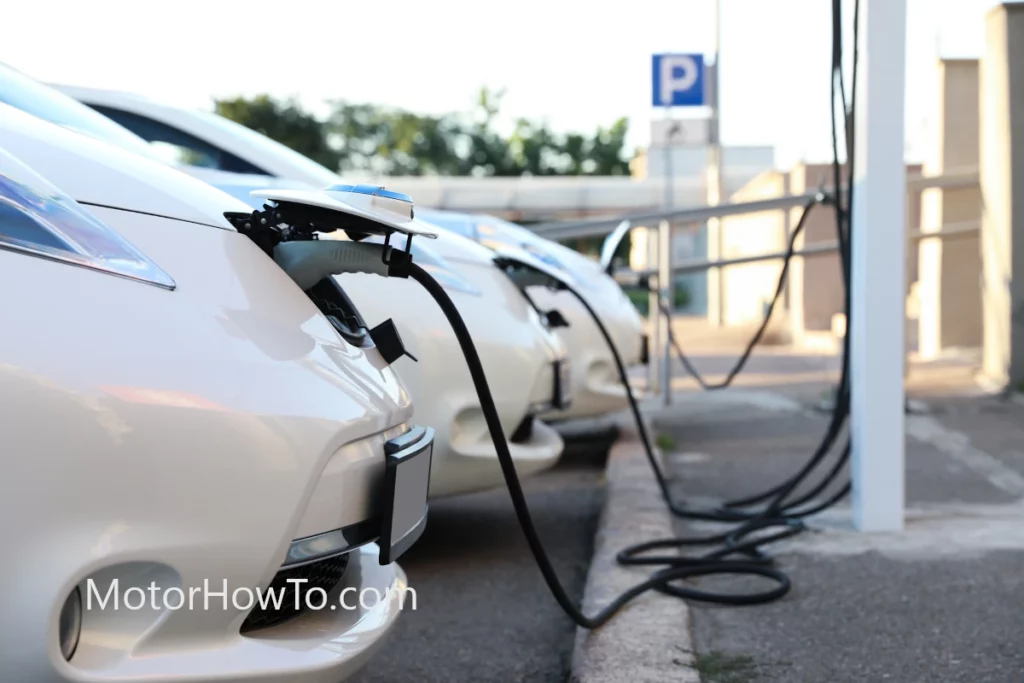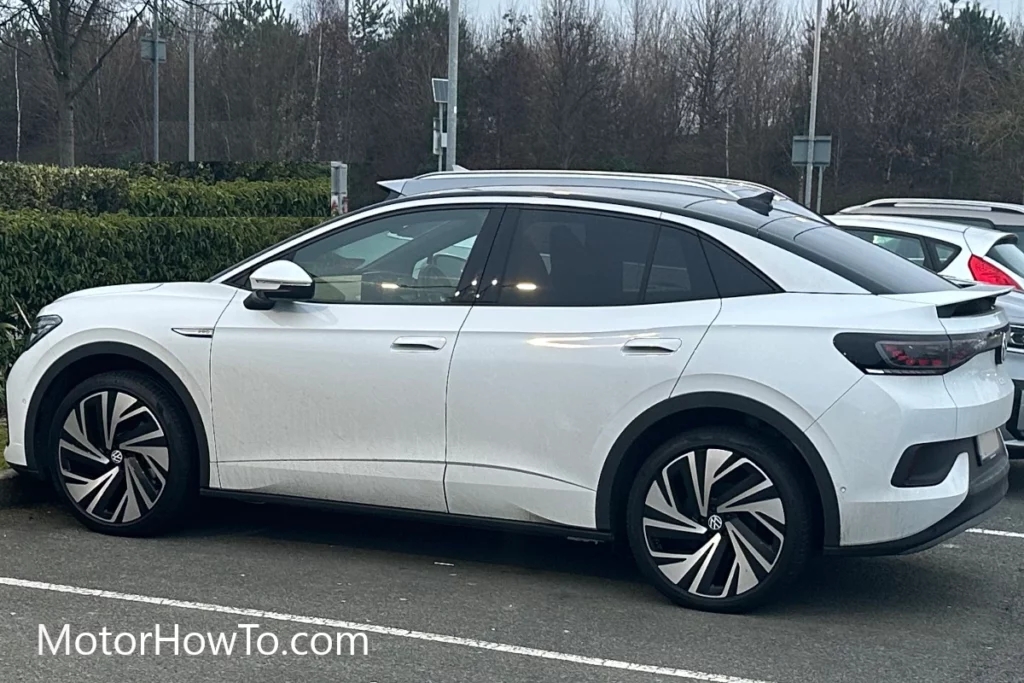The trend towards electrically powered vehicles (EVs) has been rapidly increasing in popularity, with automakers investing heavily in developing and producing new models.
With this shift in the EV market comes a new set of considerations for car buyers, to pick models that are either have front-wheel drive (aka FWD), rear-wheel drive (aka RWD), or all-wheel drive (aka AWD) transmission systems.
In this article, we will explore the pros and cons of each drive system in EVs and provide a comprehensive comparison to help you make an informed decision.
FWD is generally more efficient than RWD and AWD electric vehicles, as it reduces the car’s overall weight. However, RWD and AWD cars provide better traction and stability, which can benefit off-roading or drive in wet or slippery conditions. AWD also offers better performance in terms of acceleration and handling, but it comes at the cost of increased weight, which reduces efficiency.

Drive systems help determine the performance, handling, and overall driving experience of an EV.
FWD EVs have the motor at the front and provide better fuel efficiency, while RWD EVs offer better traction and stability.
AWD EVs are the best of both worlds, offering improved traction and stability while delivering better performance.
Understanding these drive systems’ differences is key to making the right choice.
Related:
- Is RWD Or AWD Better For Electric Cars? (Answered)
- Are Electric Cars Smoother To Drive? (Answered)
- Does An Electric Motor In Electric Cars Wear Out? (Explained)
Charging and Range Comparison between FWD, RWD, and AWD on Electric Vehicles
The charging time and range of an electric vehicle (EV) are largely determined by the size and capacity of its battery.
However, the drive system also plays a role in determining the range of an EV. In general, FWD EVs are more efficient than RWD and AWD EVs, which can result in a longer range.
This is because FWD EVs are lighter, which reduces the vehicle’s overall weight and contributes to improved battery efficiency.
On the other hand, RWD EVs are often less efficient than FWD and AWD EVs. The power delivery to the rear wheels can result in increased energy loss, reducing the vehicle’s range.
Additionally, RWD EVs are often heavier than FWD and AWD EVs, contributing to reduced battery efficiency.
AWD EVs offer the best of both worlds, providing improved traction and handling compared to FWD EVs and better performance than RWD EVs.
The electric motor’s torque is distributed evenly between all four wheels, which can result in a longer range and improved overall battery efficiency compared to traditional RWD and FWD EVs.
However, it is important to note that the exact range and charging time will vary depending on the specific model and battery specifications.
Maintenance and Repair Comparison between FWD, RWD, and AWD on Electric Vehicles
The maintenance schedule, service and repairs of either front-wheel drive (aka FWD), rear-wheel drive (aka RWD), or all-wheel drive (aka AWD) electric vehicles (EVs) are relatively similar, as they all utilise the combination of electric motor and battery systems.
However, there are some differences to keep in mind when comparing the three types of EVs.
FWD EVs typically have fewer mechanical components than RWD or AWD EVs, making them easier and less expensive to maintain.
For example, FWD EVs generally have simpler drivetrains with fewer gears, axles, and differential systems.
Additionally, the lack of a traditional transmission can reduce the maintenance and repair needs for FWD EVs.
RWD and AWD EVs, on the other hand, have more complex drivetrains with multiple gears, axles, and differential systems, making them more expensive to maintain and repair.
These EVs may also require more maintenance, such as regular oil changes, due to the presence of more mechanical components. However, many of these components are designed to last a long time, so the overall cost of ownership may not be significantly higher for RWD or AWD EVs than for FWD EVs.
In general, it’s essential to choose an EV with a reliable battery system and to properly maintain the battery and charging system to minimize the need for repairs.
The battery systems in all types of EVs are typically designed to last for many years and require minimal maintenance.
However, replacing a battery can be significant, so it’s important to factor this into the overall cost of ownership when comparing the maintenance and repair needs of FWD, RWD, and AWD EVs.
Safety Comparison Between FWD, RWD, and AWD on Electric Vehicles
Front-wheel drive (FWD) electric vehicles have simple and efficient designs, with the motor located at the front of the car.
This allows for better handling and stability in certain driving conditions. Front-heavy weight distribution can increase the risk of a front-end collision.
Rear-wheel drive (RWD) electric vehicles have a sportier feel, with the power from the electric motor sent to the rear wheels. This design provides better traction and stability in high-performance driving conditions but can reduce stability in emergencies.
RWD electric vehicles are more susceptible to oversteering, making them challenging to control in certain situations. The rear-heavy weight distribution can increase the risk of a rear-end collision.
All-wheel drive (AWD) electric vehicles offer improved traction and stability compared to FWD and RWD vehicles, as the power from the electric motor is distributed evenly between all four wheels. This can improve emergency control and handling, especially in adverse weather conditions.
Additionally, the balanced weight distribution of an AWD electric vehicle can reduce the risk of front-end or rear-end collisions.
However, the added weight and complexity of the AWD system can also increase maintenance and repair costs compared to FWD and RWD vehicles.
FWD vs. RWD vs. AWD On Electric Vehicles In Snow Condition
In snow and icy conditions, all-wheel drive (aka AWD) electric vehicles are the best choice as they provide improved traction and handling compared to front-wheel drive (aka FWD) and rear-wheel drive (aka RWD) vehicles.
The electric motor’s power is distributed evenly between all four wheels, providing better stability and control in slippery conditions.
Additionally, some AWD systems, such as those that use torque vectoring, can provide even better traction by actively adjusting the amount of power sent to each wheel.
Front-wheel drive (FWD) electric vehicles are suitable for light snow conditions but may struggle in heavy snow or on icy roads.
The power from the electric motor is transmitted directly to the front wheels, which can result in lost traction and stability compared to AWD vehicles.
However, FWD electric vehicles are often more efficient and lighter than RWD and AWD vehicles, making them a good choice for city driving.
Rear-wheel drive (RWD) electric vehicles are not recommended for snow conditions as the power from the electric motor is transmitted directly to the rear wheels for motion.
This can result in reduced traction and stability compared to FWD and AWD vehicles, making them more difficult to handle in slippery conditions. However, RWD electric vehicles are often designed for high-performance driving so that they may perform well in other driving conditions.
Conclusion
Choosing between either the front-wheel drive (aka FWD), rear-wheel drive (aka RWD), or all-wheel drive (aka AWD) electric vehicles (EVs) involves considering various factors such as efficiency, range, maintenance, repair costs, and safety.
FWD EVs offer better fuel efficiency and lighter weight, RWD EVs provide better traction and stability, and AWD EVs provide a balance of both.
In terms of charging and range, FWD EVs have a longer range due to their lighter weight and improved battery efficiency, while RWD and AWD EVs have more complex drivetrains and are heavier, which can reduce range and increase maintenance costs.
Regarding safety, FWD EVs offer better handling and stability but have a higher risk of a front-end collision, RWD EVs offer a sportier feel but have a higher risk of oversteering, and AWD EVs offer improved traction and stability.
Sources
FWD vs. RWD vs. AWD: Drivetrain layouts and what they mean
A Simple Guide To Drivetrains: AWD vs. 4WD vs. FWD vs. RWD
Are Electric Cars Rear-Wheel-Drive, Front-Wheel-Drive
Electric Car EPA Range Mega Comparison (US)
How Does Using AWD Affect an EV’s Driving Range?
AWD, FWD, or RWD—Which Wheel Drive Is Best?
The EV Revolution Is Ushering In the Return of Rear-Wheel



